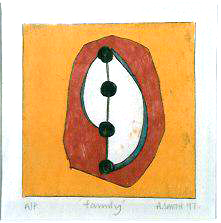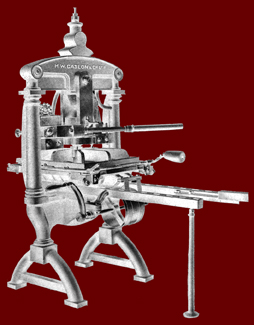
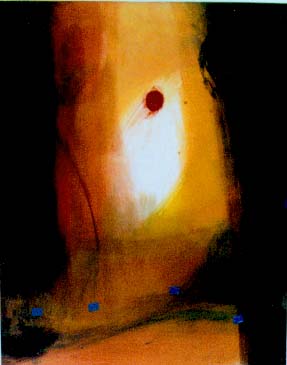
monoprint - Anglia Ruskin University
Either use the back of an old litho plate or a sheet of transparent plastic (pvc or perspex). The image is painted with a brush onto the surface using ink that may have additional extender base added in order to give more flexibility. After painting there is usually too much ink on the surface and the excess should be wiped or blotted in order to leave a thin film of ink. Wiping the ink with a rag (as in this example) can introduce interesting textures.
Water based inks work well for this process. See also the section on monoprints with SCREENPRINTING.
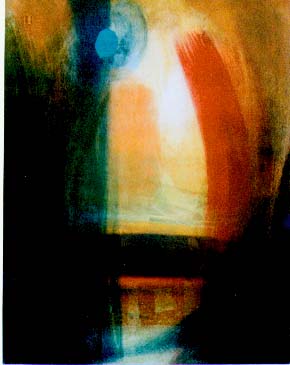
monoprint - Anglia Ruskin University
The method of printing may depend on the size of the image, which may be printed by either burnishing the back of the paper with a large spoon or by using a burnisher. Alternatively the plate can be run through an etching press or any kind of rolling press*.
* see the section on Intaglio for information on this type of press.
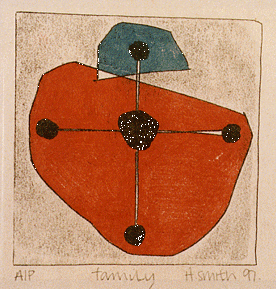
Another method has the advantage of not requiring a press. A slab of strong plate glass, or other smooth surface, is covered in ink with a roller. The ink needs to be stiff and it may be necessary to add driers and / or clear extender to make this process work to its best advantage. A sheet of newsprint or other thin paper is laid gently onto the ink and a design is drawn on the back. If the ink is of the correct consistency it is possible to create a printed line drawing with very little unwanted ink being picked up.
In order to create a multi-coloured design additional colours are simply painted (or rolled up with a roller with areas wiped away). More than one colour can be printed at a time. The paper with the line print on it is laid back into position and the back of the paper is either burnished or rolled with a clean hard roller. Registration is important. Textured areas can be introduced by using different methods of burnishing and drawing.
When burnishing it may be advisable to introduce another sheet of paper on top of the sheet you are printing so that you do not amage your print.
The glass should not be put through the press!
PLEASE BE AWARE
The written notes and illustrations contained on this site are not intended as instructions or as a practical guide to printmaking, they have been made quite simply as background material for anyone interested in prints and the qualities that are inherent in the use of particular processes. Anyone wishing to make prints should be aware of the risks involved and they should seek appropriate first hand instruction in the use of equipment and materials.
